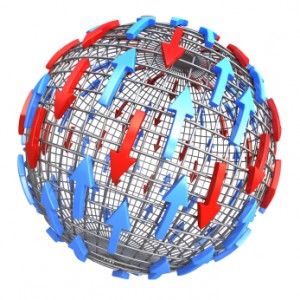 Once a more representative price has been set for carbon, whether through carbon tax or cap and trade, new revenue becomes available to be put to use.
Once a more representative price has been set for carbon, whether through carbon tax or cap and trade, new revenue becomes available to be put to use.
This carbon revenue needs to be recycled or reinvested to enable us to change our behaviour, technology, systems, and infrastructure so that we emit less greenhouse gases (GHG) every day.
On this page, you will learn about the following ways carbon revenue can be recycled and the consequences of each:
- Trade offs / Consequences
- Household fairness
- Business competitiveness
- Economic growth
- GHG emissions
- Public acceptability
- Ways to recycle revenue
- Transfer to households
- Reduce income taxes
- Invest in infrastructure
- Invest in clean technology
- Reduce government debt
- Provide support to industry
Click a link in the list above to jump to that topic on this page.
The following analysis and information on this topic comes from the Canadian Ecofiscal Commission (1).
Trade offs / Consequences
No matter which way the government choses to recycle carbon revenue, there will be trade offs between their effectiveness in reducing emissions and in their ability to maintain fairness and economic stability. The consequences of revenue recycling choices depends upon how reliant a province’s economy is on fossil fuel.
There are five trade offs to consider when choosing how to recycle carbon revenue:
- Household fairness – Typically, lower income households find it more difficult to cope with these consequences.
- Prices rise — Costs of fuels goes up. Cost of goods that depend upon those fuels also go up. (This is why the mechanism is put in place – to make commodities that depend upon fossil fuels less attractive and to create incentive to move to alternatives.)
- Incomes fall — Industries that depend upon fossil fuels may see their costs go up and their sales go down. This may result in reductions in investment and loss of jobs in those industries. With time however, new jobs should be created in the shift into new investment areas (like renewable energy and building retrofitting).
- Business competitiveness – There are many factors that determine whether or not a business will be competitive in its market; carbon pricing may add to the list. However, carbon costs really only effect competitiveness for firms who are “trade exposed”. In other words, if carbon pricing is uniform throughout the market, then all businesses are on a “level playing field” and businesses in one jurisdiction won’t have an inherent advantage over those in another.
- Economic growth – The factors above can have a consequence to slow or stall economic growth – at least in the short term.
- GHG emissions – Some of the revenue recycling measures will create more of an incentive to reduce GHG emissions than others.
- Public acceptability – In order for carbon pricing to be successful, the government will need to ensure that the public does not reject it before it can do its job.
Ways to recycle revenue
How the government chooses to recycle carbon revenue is the biggest challenge and the biggest opportunity. These choices can result in a program that is truly effective in reducing emissions while still maintaining (or growing) the economy OR a complete waste of time that puts the economy at risk.
- Transfer to households – This could be an annual cheque paid directly to citizens. It may be equal for all or adjusted for income.
- Advantages – Can address fairness issues; Highly progressive; Highly transparent; Helps to build support
- Disadvantages – No economic or environmental benefits
- Reduce income taxes – This could be changes in income tax rate tables or an increase in minimum tax exemption levels.
- Advantages – Can improve economic growth; Can increase “durability” of policy; Corporate tax cuts can increase support from business
- Disadvantages – Tax cuts not highly “visible”; May not increase public support; Personal tax cuts may be regressive
- Invest in infrastructure – Put money into things that can help people make choices away from fossil fuels. (e.g. public transit)
- Advantages – Can improve longer-term productivity and economic growth; Could drive additional emissions reductions in some cases; Could improve public support
- Disadvantages – Challenging to differentiate “additional” infrastructure spending due to carbon revenue; Economic benefits depend on precise choices and details of implementation
- Invest in clean technology – Provide public support for development of new technologies that will help reduce energy consumption, improve efficiencies, etc.
- Advantages – Can drive additional emissions reductions; Can reduce cost of long-term reductions, enabling more cost- effective policy; Could increase public support
- Disadvantages – Challenging to implement well (picking winners vs. broad support)
- Reduce government debt – Since carbon pricing results in new revenue, a government may choose to balance its books.
- Advantages – Addresses costs of increasing high debt (in provinces with this issue); Could help avoid future tax increases to service debt; Improves inter- generational fairness
- Disadvantages – Very intangible – unlikely to garner public support (except in high-debt cases)
- Provide support to industry – This means financial support to help industries that are particularly dependent upon fossil fuel make the transition away from that dependence.
- Advantages – Can address competitiveness / leakage pressures; Can give industry more time to reduce carbon costs; Can build support in business community
- Disadvantages – Can increase overall costs; Can decrease environmental effectiveness




